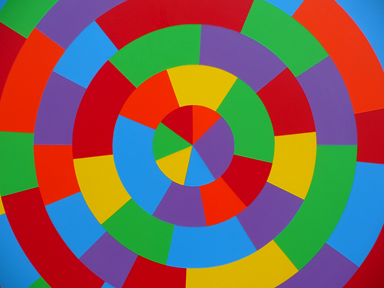Another way to generate text #7: Gysin & Burroughs vs. Tristan Tzara
A while back, I ran a little series, “Another way to generate text.” The first one proved fairly popular, and I’ve been meaning to make more of them, but generative techniques haven’t been on my mind. However, my post last week, “Experimental fiction as principle and as genre,” generated a lot of text (haha), in the form of comments. Some people who chimed in questioned whether the Cut-Up Technique that Brion Gysin and William S. Burroughs developed and used in the 1950s was ever all that experimental. Specifically, PedestrianX wrote:
I find it hard to accept this argument when its main example, the Cut-up, didn’t start when you’re claiming it did. I’m sure you know Tzara was doing it in the 20s, and Burroughs himself has pointed to predecessors like “The Waste Land.” Eliot may not have been literally cutting and pasting, but Tzara was.
This comment got me thinking about the role influence plays in experimentation; more about that next week. Today I want to address the point PedestrianX is making, as it strikes me as pretty interesting. Were Gysin and Burroughs merely repeating Tzara? Or were they doing something substantially different?
To figure that out, I decided to run through the respective techniques, documenting what happened along the way. Because if I’ve learned anything in my studies of experimental art, it’s that thinking about the techniques is usually no substitute for sitting down and getting one’s hands dirty.
If you want to get dirty, too, then kindly join me after the jump . . .
The difference between a concept & a constraint, part 2: What is a constraint?
OK, back to this. In Part 1, I traced out how in conceptual art, the concept lies outside whatever artwork is produced—how, strictly speaking, the concept itself is the artwork, and whatever thingamabob the artist then uses the concept to go on to make (if anything) counts more as a record or a product of the originating concept. (This is according to the teachings of Sol LeWitt, as practiced by Kenneth Goldsmith.) Thus, we arrived at the following formulation:
- Artist > Concept > Artwork (Record)
Now, I’m not going to argue that every conceptual artist on Planet Earth works according to this model. But LeWitt’s prescription has proven influential, and continues to be revolutionary—because choosing to work with either a concept or a constraint will lead an artist down one of two very different paths. To see how this is the case, let’s try defining what a constraint is, aided by the Puzzle Master himself, Georges Perec . . .
The difference between a concept & a constraint, part 1: What is a concept?

Sol LeWitt: “Wall Drawing #1111: A Circle with Broken Bands of Color” (2003, detail). Photo by Jason Stec.
[Update: Part 2 is here.]
I wrote about this to some extent here, but I wanted to expound on the issue in what I hope is a more coherent form. Because I frequently see concepts confused with constraints, and the Oulipo lumped in with conceptual writing. For instance, this entry at Poets.org, “A Brief Guide to Conceptual Poetry,” states:
One direct predecessor of contemporary conceptual writing is Oulipo (l’Ouvroir de Littérature Potentielle), a writers’ group interested in experimenting with different forms of literary constraint, represented by writers like Italo Calvino, Georges Perec, and Raymound Queneau. One example of an Oulipean constraint is the N + 7 procedure, in which each word in an original text is replaced with the word which appears seven entries below it in a dictionary. Other key influences cited include John Cage’s and Jackson Mac Low’s chance operations, as well as the Brazilian concrete poetry movement.
I would argue that the Oulipo, historically speaking, are not conceptual writers/artists—although it’s easy to see how that confusion has come about, because the Oulipians have proposed some conceptual techniques, such as N+7 (which I’d argue is not a constraint). (Also, it’s each noun that gets replaced, not each word.)
What, then, distinguishes concepts from constraints? And why does that distinction matter? In this series of posts, I’ll try answering those questions, starting with what we mean when we call art conceptual.


